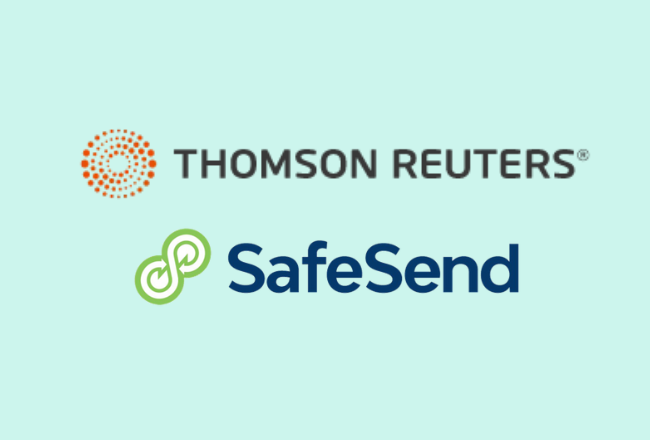
Using AI to Cut Tax Prep Time in Half: Key Insights from Industry Experts
What if there was a way to cut your tax preparation time in half without sacrificing quality? That’s not just a dream scenario – it’s becoming reality for firms embracing artificial intelligence and automation tools.
In a recent webinar, industry experts shared valuable insights on how accounting firms can leverage AI and automation to significantly reduce tax preparation time while maintaining accuracy and compliance. The session featured Dave Hasse, CPA and founder of TruePrep AI, Sergio Bustamante of MSB Tax and Accounting, and Daniel Fritz, VP of Product at SmartVault.
Here’s a summary of their conversation. You can watch the full webinar on-demand here.
The Current State of AI in Accounting
Dave Hasse opened with a realistic assessment of AI’s capabilities in the accounting industry. “AI is here. There’s really exciting potential and it’s getting faster than probably anything we’ve seen from a technology perspective historically. But at the same time, it’s not perfect, and we’re in an industry where compliance and risk need to be managed.”
While AI excels at language-based tasks like writing emails, it can struggle with complex calculations. The key is finding the right balance between automation and human oversight to maximize efficiency while maintaining accuracy.
Four Key Tips for Making AI Work for Your Firm
- Establish a Central Data Hub
A crucial first step is creating a centralized document repository – or as Dawn Brolin, CPA calls it, a single source of truth – that integrates with your existing tools. Why? Sergio Bustamante says: “You have to have your workpapers there and you want the final tax returns there – where they can be easily accessed by your admin staff, the preparer, or whoever it might be.” When implemented properly, it eliminates the common scenarios that plague most firms: those frantic searches, the confusion of which document is the right one, and the dreaded “can you send that again?” client conversations. - Ensure Compliance and Security
When implementing AI solutions, maintaining security and compliance is paramount. The speakers emphasized the importance of choosing solutions that meet industry standards, such as SOC 2 Type 2 compliance, and provide proper access controls for sensitive client information. Your systems should also have key security measures like:- Encryption
- Version Control and automatic back-up
- Audit Trails that automatically record every action
- Multi-factor authentication
- Automate Administrative Tasks
One of the most significant benefits of AI implementation is the automation of time-consuming administrative tasks. “I don’t want my accounting staff doing 40 little five-minute tasks during the day,” Dave Hasse explains. Think about it… how much time could you get back in your day?Sergio also highlighted that automating tasks means work happens without your direct involvement. Certain tasks aren’t sitting still waiting for you – they’re running behind the scenes while you focus on completing other projects. - Use AI to Initiate Advisory Services
AI can help identify opportunities for additional services and tax savings. The technology can analyze returns and generate insights that can lead to valuable advisory conversations with clients.”We can generate a delivery letter… it’s going to tell me whether they (the client) owe or they are getting a refund. Then, TruePrep uses AI to give them a summary of what changed year-over-year and what’s driving a tax liability.“The key advantage is that these insights are generated automatically during the tax preparation process, allowing firms to be more proactive in their advisory approach. Sergio added that this automated analysis helps firms provide more value to new clients right from the start.His firm uses the system to review prospective clients’ prior year returns, identifying potential tax savings opportunities before the first meeting. “I’m way too busy to be doing that for every single 1040 that comes through the door,” Sergio noted, highlighting how AI makes this level of service scalable.
Real-World Implementation Results
Sergio shared his firm’s experience implementing AI and automation tools during a period of significant growth. The technology helped them handle the increased workload efficiently, giving them the capacity to handle more clients than ever before.
“We were able to do a lot more work. It is nice being able to put the returns in TruePrep, let the robots do their thing, and then verify the work afterwards,” Sergio explained.
One of the most valuable features Sergio highlighted was the automation of client communications and document routing. SmartVault automatically notifies clients about the status of their returns and routes documents to the correct locations without manual intervention. This automation helped his firm maintain clear communication with clients while managing the increased workload.
His firm went from struggling with profitability during their initial growth phase to successfully managing a significantly larger client base with the help of these automated solutions.
Key Implementation Considerations
For firms considering implementing new AI and automation tools, the experts offered several practical suggestions:
- Start with establishing a solid document management system before adding AI tools
- Ensure new solutions integrate well with existing tax preparation software
- Consider implementing changes during less busy periods, though urgent changes can be managed even during tax season if necessary
- Focus on training staff and establishing clear processes for using new tools
Looking Ahead
The webinar concluded with a demonstration of how modern AI tools can handle complex tasks like processing brokerage statements and validating tax returns. Dave Hasse emphasized that while AI can dramatically improve efficiency, it works best as a “junior accountant” that requires human oversight. “When we start to get really high confidence on our inputs, we can then compare it to a 1040… pointing the reviewer to where they need to spend their time.”
The key takeaway is that AI and automation aren’t replacing accountants but rather enabling them to work more efficiently and focus on higher-value activities. As these technologies continue to evolve, firms that successfully implement them will be better positioned to handle growth while maintaining quality and compliance.
AI and automation aren’t just nice-to-have features anymore – they’re becoming essential tools for modern accounting practices.




